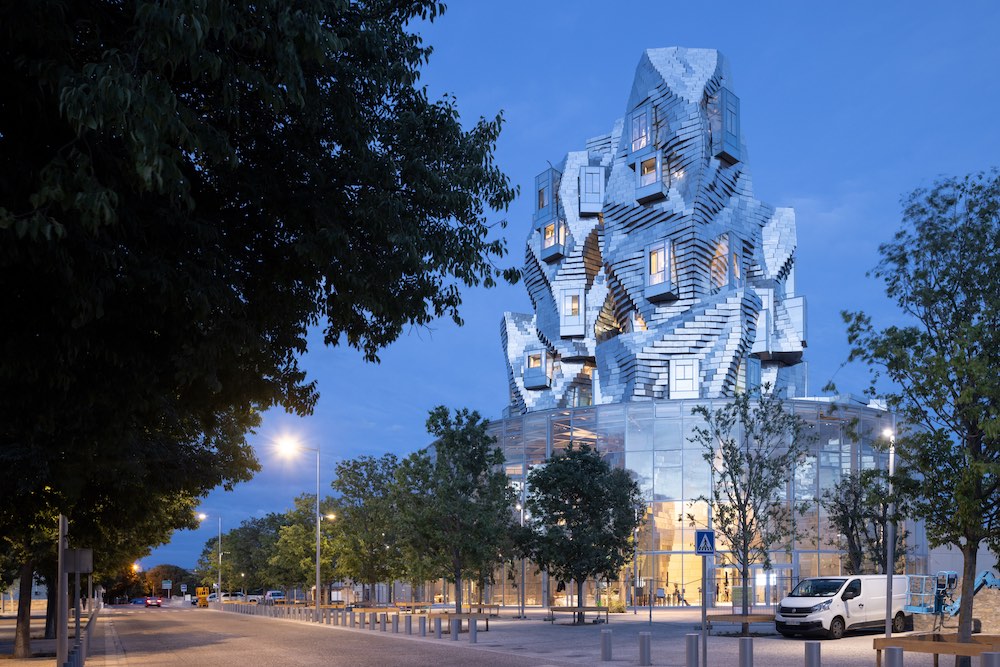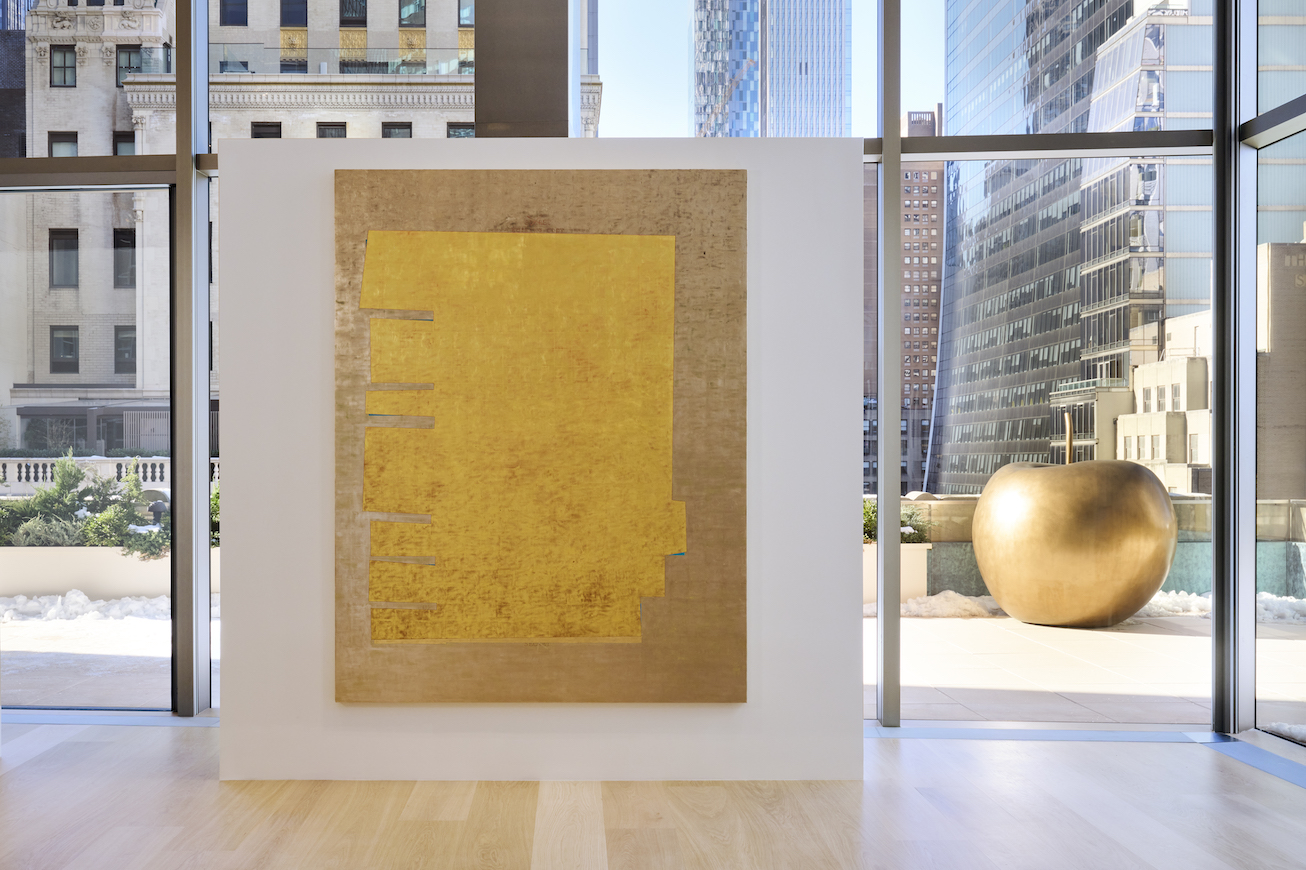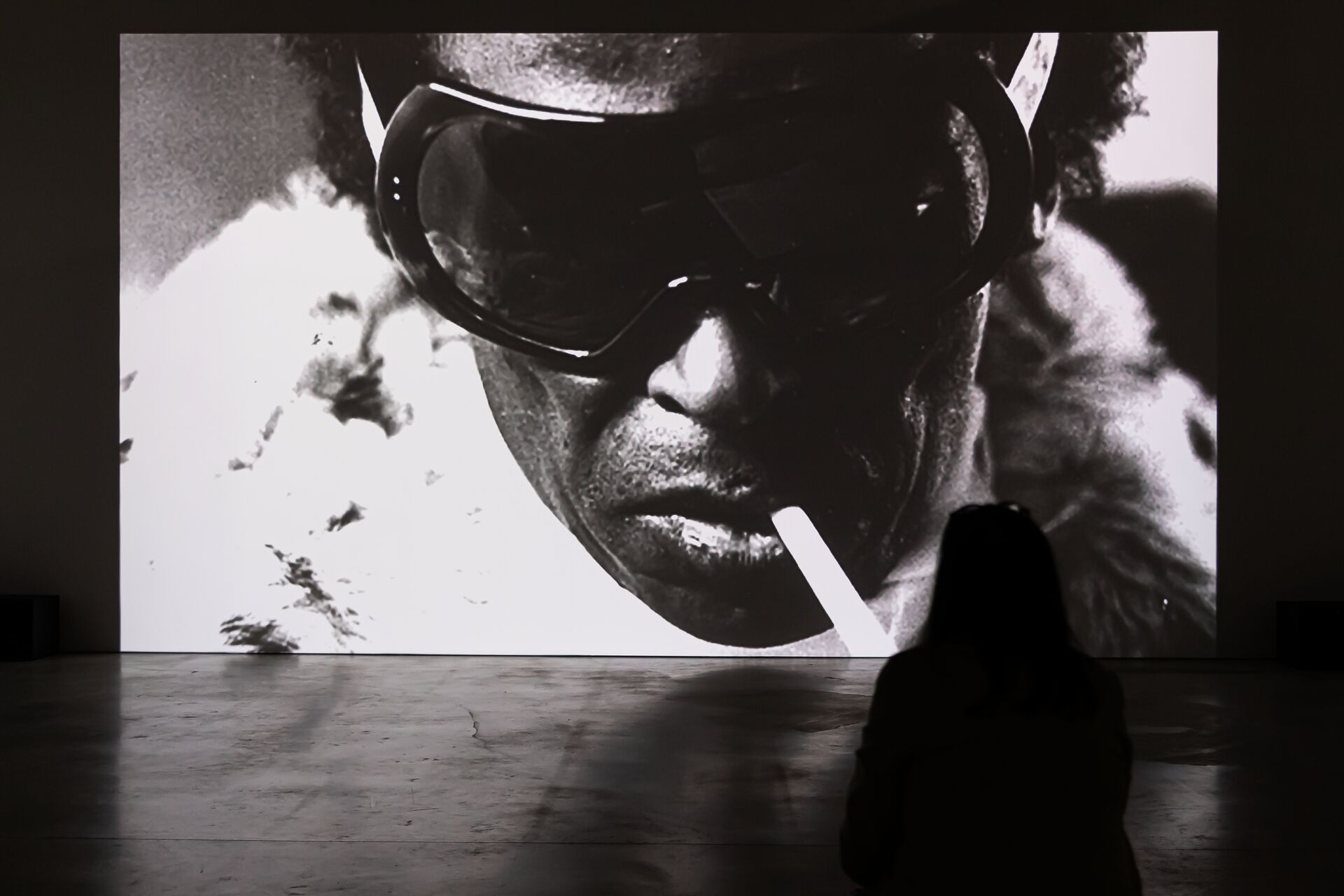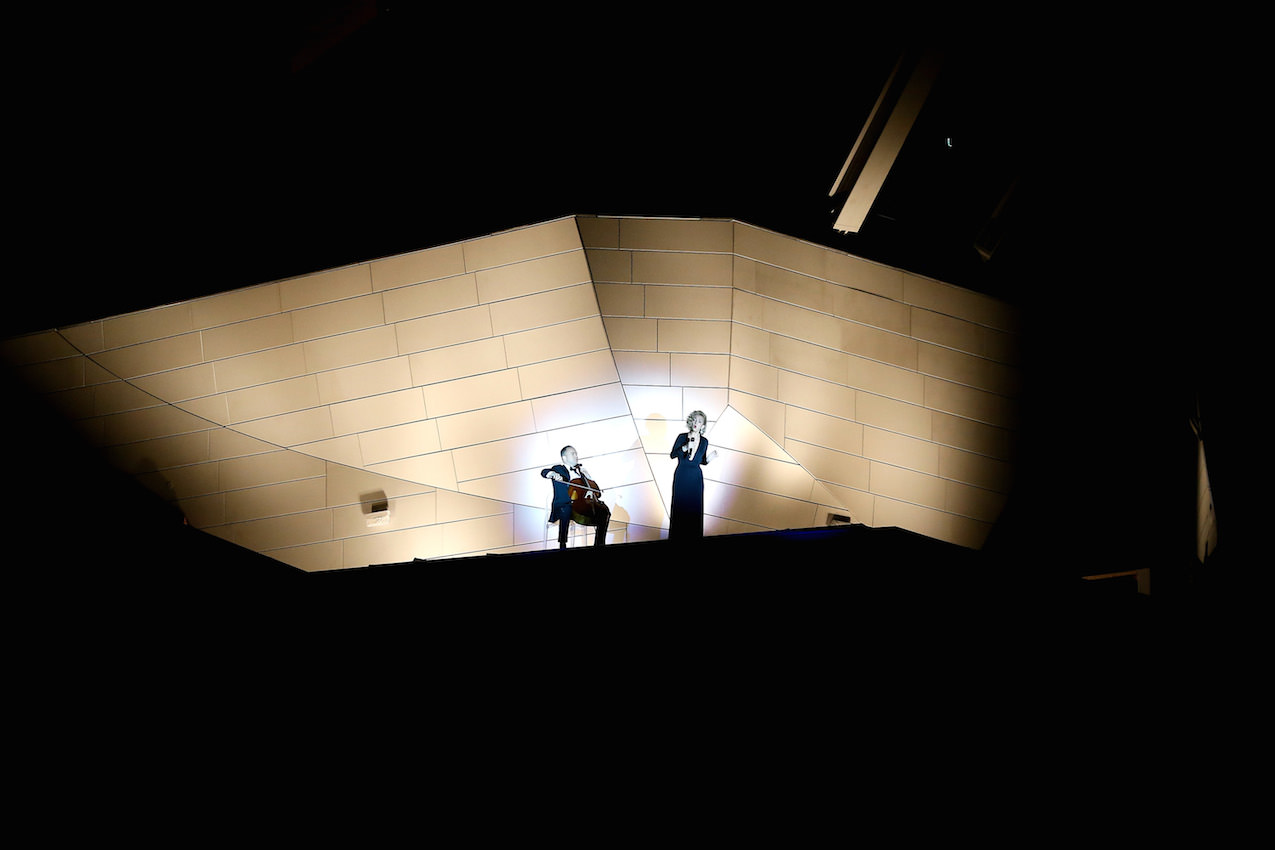The Pritzker Prize-winning architect Frank Gehry has a knack for bending reality. His shape-shifting structures trick the mind and repel expectations. From afar, distinct visual splendors hinge on deconstructed and fragmented elements, reflecting a distinguishable aesthetic. Up close, their unusual facades and their ability to affect culture resonate with the community.
At 92 years old, the architect has been behind historic projects of captivating heights, including the Guggenheim Museum in Bilbao, the Walt Disney Concert Hall in downtown Los Angeles, the Louis Vuitton Foundation in Paris, the Weisman Art Museum in Minneapolis, and the Vitra Design Museum in Weil am Rhein. This year, Gehry adds to his long list of masterful creations, introducing a new building for the LUMA Foundation in Arles.
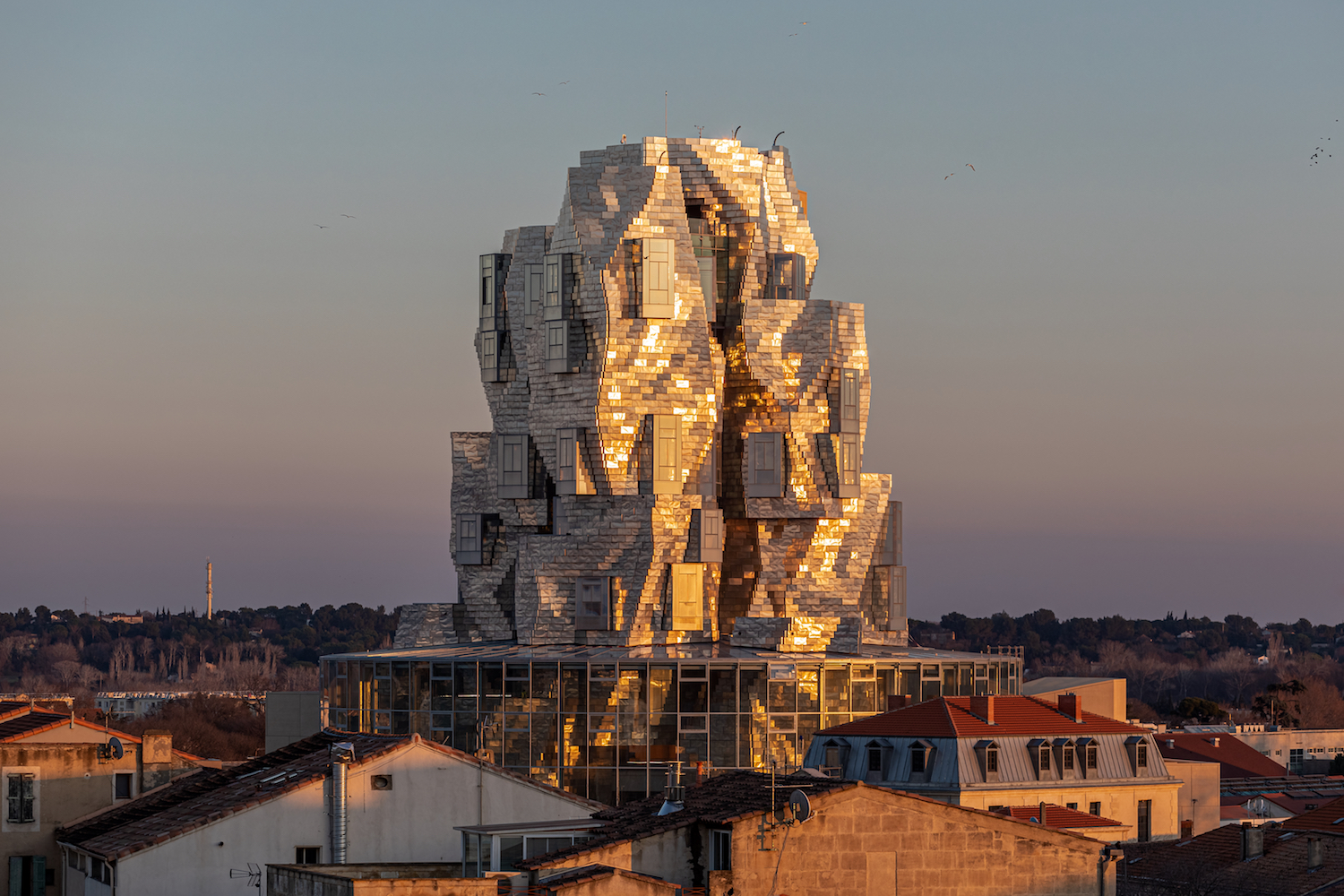
Tower imagined by Frank Gehry for LUMA Arles, January 2021, LUMA Arles, Parc des Ateliers, Arles, France, photo by Adrian Deweerdt.
The 27-acre creative campus at the Parc des Ateliers brings together artists and innovators of the future, thanks to the philanthropic organization’s founder, Maja Hoffmann. At its center is Gehry’s spectacular 15,000-square- meter geometric tower, twisting with 11,000 stainless steel panels, inspired by Vincent van Gogh’s Starry Night painting. Inside, visitors can explore an array of exhibition galleries, project spaces, the foundation’s research and archive facilities, workshop and seminar rooms, an auditorium, and a café. Complementing the UNESCO World Heritage Site’s creative campus as well are seven former railway factories—four of which have been renovated by Selldorf Architects into exhibition and performance spaces—and gardens and public parks designed by the landscape architect Bas Smets.
Since 2004, the LUMA Foundation has focused on the links between art, culture, environmental issues, human rights, education, and research. Dedicated to providing artists with opportunities to produce new work, the foundation encourages collaboration with other artists, curators, and diverse audiences for exploration and experimentation. At its new campus, ongoing exhibitions, residencies, and a living archive program will provide artists with new opportunities, and engage the community like never before.
Whitewall spoke with Gehry about the importance of creating community with architecture, why he’s focused on more philanthropic-forward projects, and how design can impact culture for good.
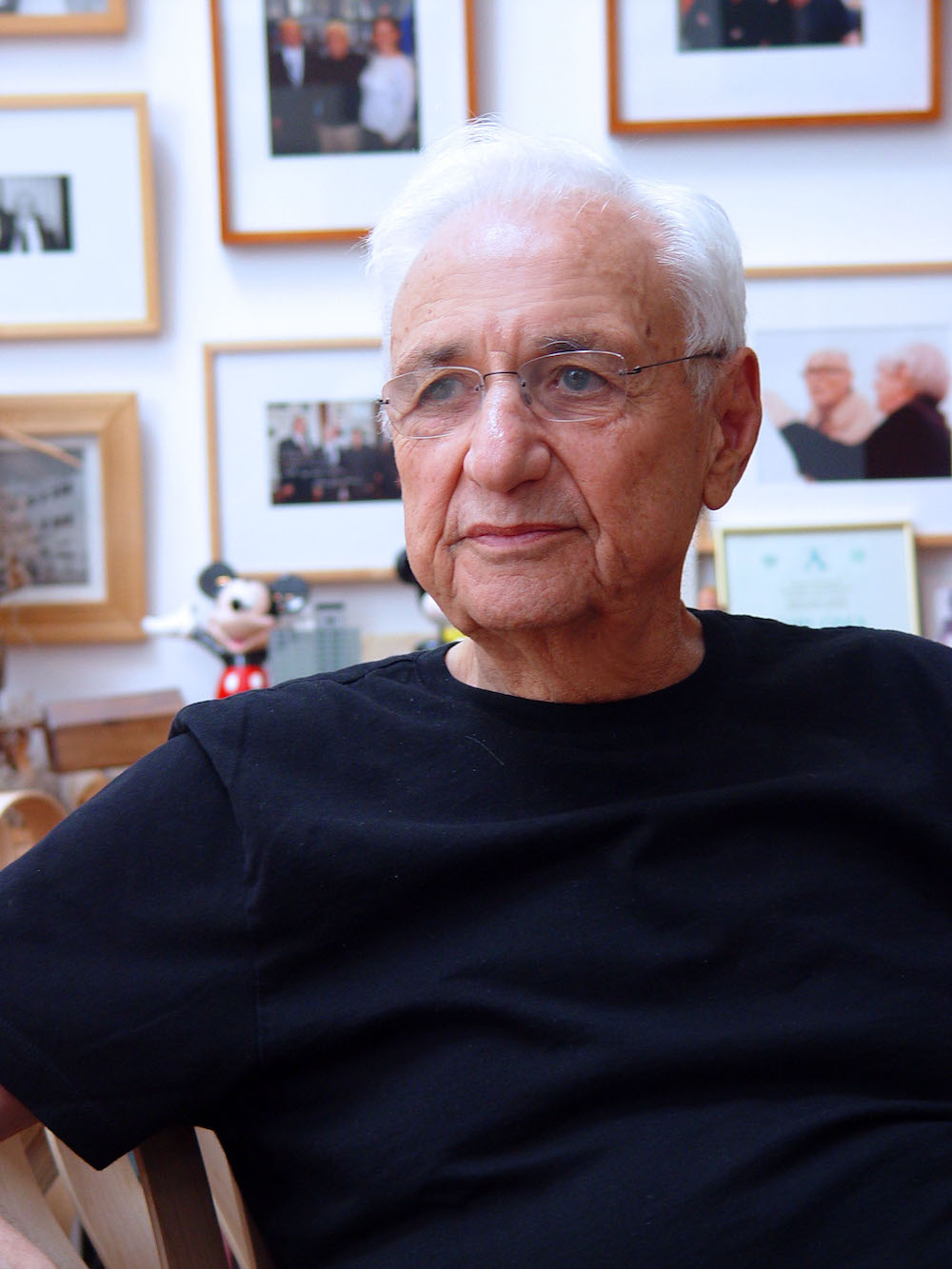
Portrait of Frank Gehry by Alexandra Cabri.
WHITEWALL: What was the starting point for LUMA Arles?
FRANK GEHRY: The starting and ending point was Maja Hoffmann. This was Maja’s vision from the beginning, and she was in the creative process at every turn. This project is a reflection of a true collaboration between us.
WW: How did the two of you want it to visually appear amid the skyline of Arles? Did the historical nature of the location and it being a UNESCO Heritage Site impact your approach to design?
FG: Maja kept pushing us to create a building that could take advantage of the light in Arles. With that in mind, we started breaking up the facade and placing the blocks at different angles and we chose a stainless steel that has a bit of a warped surface. The combination of the two catches the light just beautifully, making the building a watercolor with the ever-changing sky.
I thought that the drum around the base of the project would help ground the building and connect it back to the Roman amphitheater and the coliseum.
WW: How did you want people to engage with the project—both from the outside and inside?
FG: From the outside, we wanted people to enter the project easily from avenue Victor Hugo and to think of it as the entrance to the larger park with its contemporary and historical buildings. I wanted people to look out to the city and the Camargue and to feel connected to the beautiful setting.
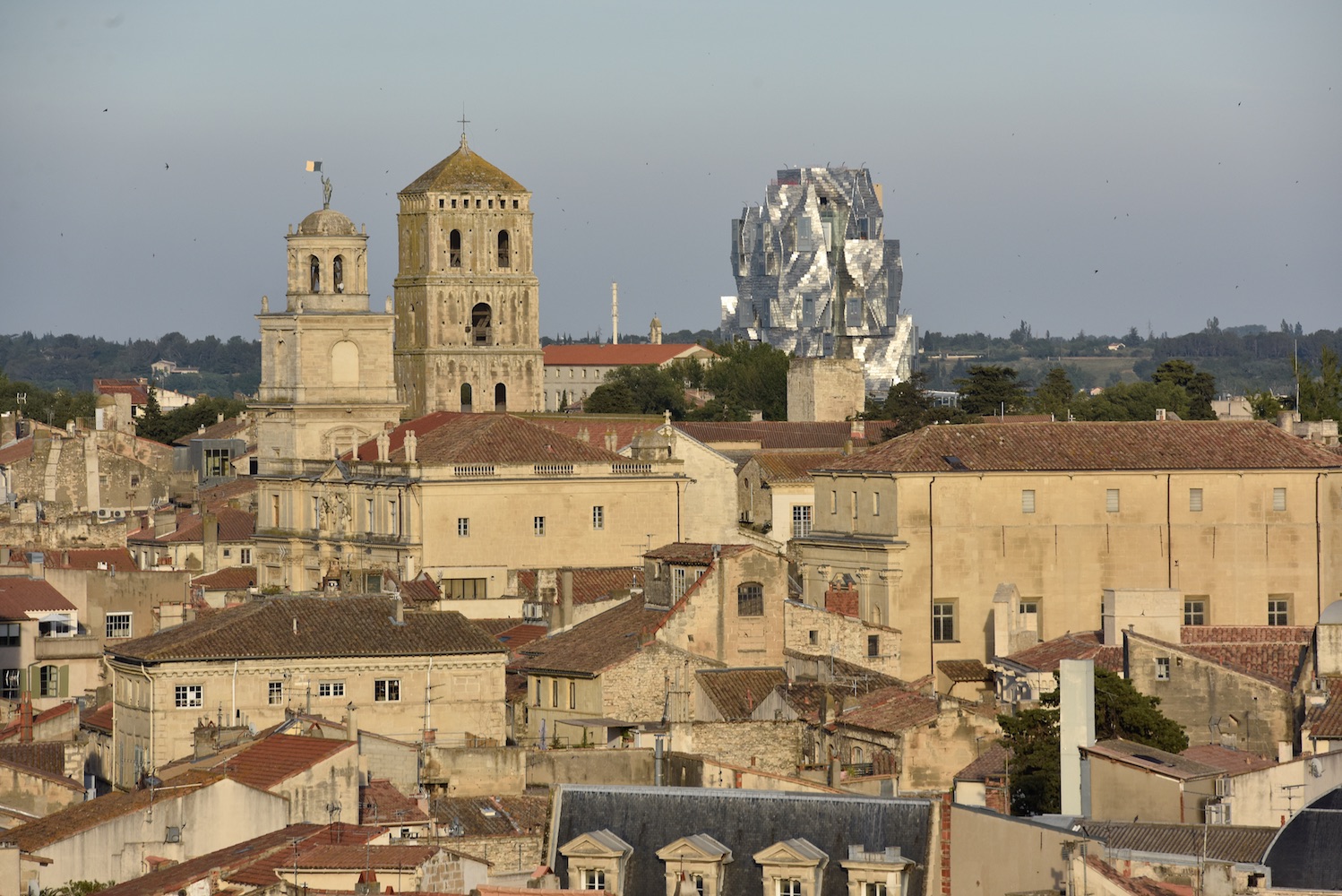
LUMA Arles in Parc des Ateliers, Arles, France, photo by Hervé Hôte.
WW: The structure features a softer metal to achieve an aesthetic inspired by Vincent van Gogh’s Starry Night painting. How is this done? Why was this an effect you wanted to achieve?
FG: The metal effect was created in concert with the metal fabricators. We were looking for something that would give an “oilcan” effect. You can see this on buildings, such as the Inland Steel Building in Chicago, where the metal has a slightly warped surface. This bends the light in a different way than typical surfaces. It became clear that this type of metal on the different angled surfaces would give us an ever-changing light show on the building. The softer metal further made the building into a watercolor. I had intended the building to reflect the sky, but I wasn’t quite prepared for the intensity of the effect that we got.
WW: The 15,000-square-meter tower is the center of LUMA Arles, housing exhibition galleries, project spaces, and the foundation’s research and archive facilities, as well as rooms for workshops and seminars. How did you design the building with all of this in mind?
FG: Our process is very iterative and flexible. We spend a lot of time in the programming and block model stage. This allows for us and the client to test different hypotheses in model form. When you have a client like Maja, who is really an artist herself, this can lead to a lot of exploration and a lot of happy accidents. We listened to each other a lot, and the programming shaped the architecture, and the architecture shaped the programming.
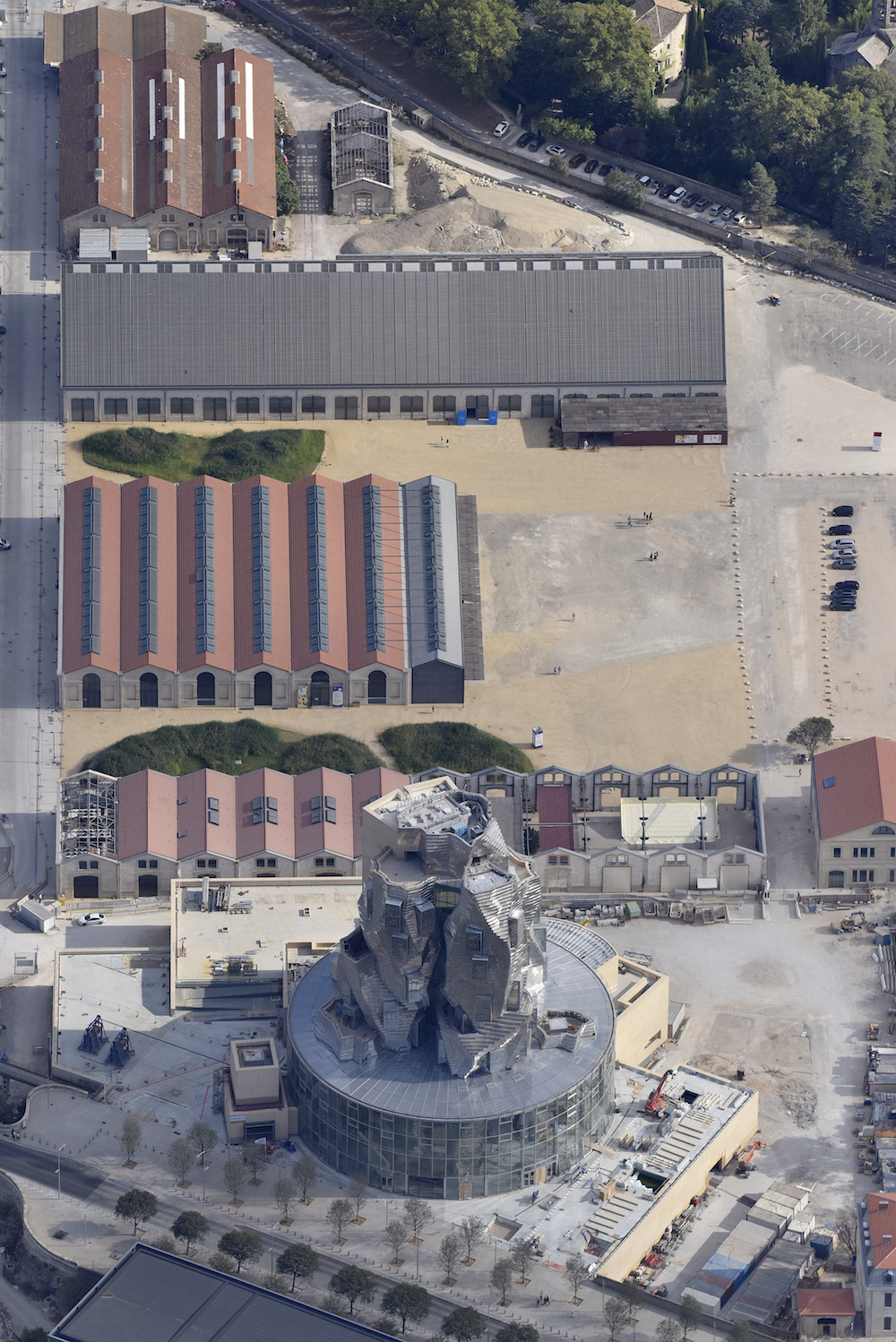
La Mécanique Générale, LUMA Arles, Parc des Ateliers, Arles, France, courtesy of the LUMA Foundation.
WW: How does this building interact with other parts of the campus such as the renovated railway factories by Selldorf?
FG: Those buildings are not new—they have been on the site since we helped Maja with the overall master plan of the Parc des Ateliers. We sited our building very specifically to take advantage of those existing buildings so that they all worked together.
WW: What do you feel is the importance of architecture in creating community?
FG: Creating a space where all feel welcome and included and safe is the most important thing that cities can do.
WW: At home, you live with art, and have pieces by creators like Ken Price, Ed Ruscha, Carrie Jenkins, and Cecily Brown. Can you speak to the importance of integrating art and culture into architecture and urban planning?
FG: Historically, art has been a part of culture from the earliest of days. The greatest cities in the world have embraced it. It is the most important part of our heritage. It’s a big part of what makes life worth living.
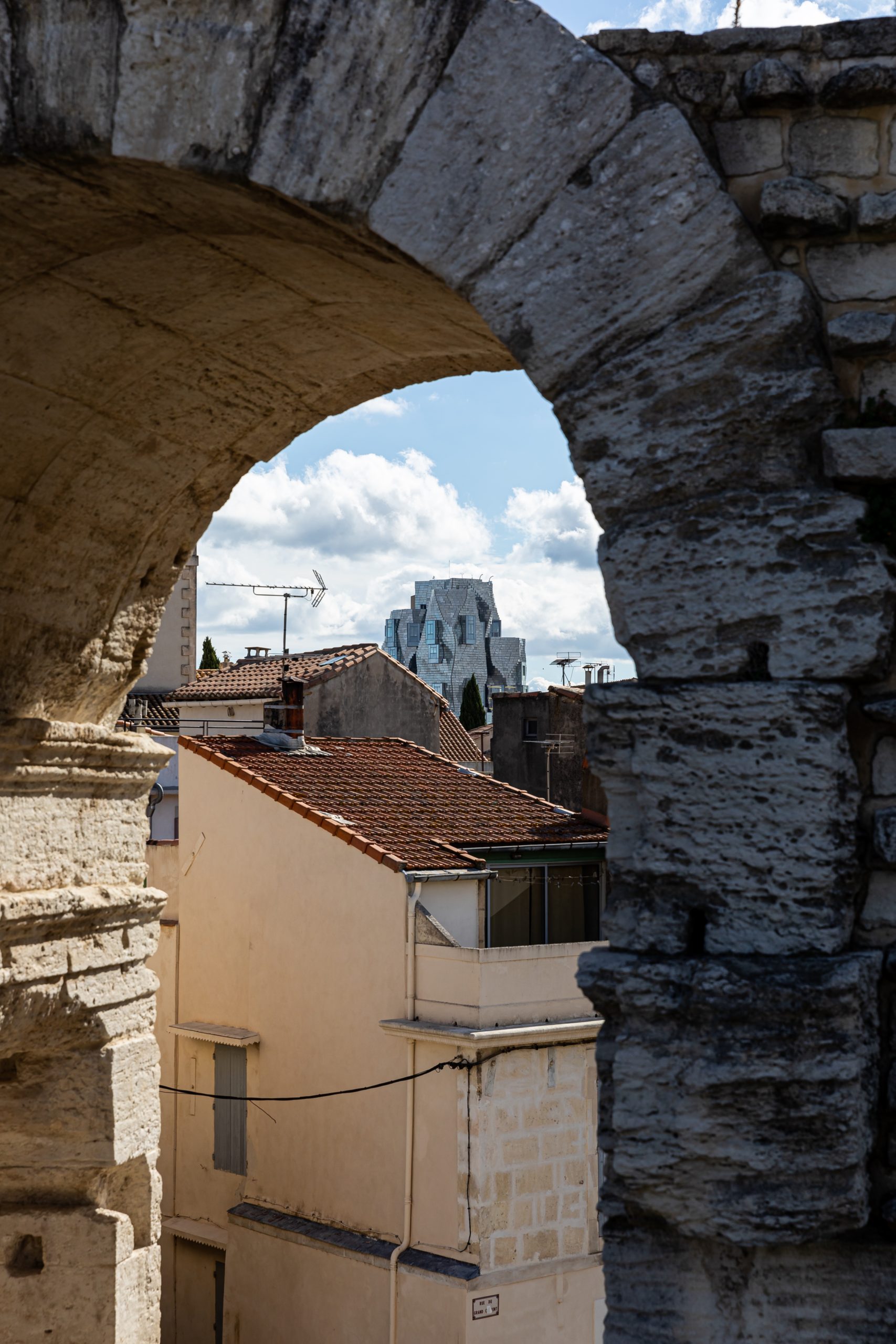
LUMA Arles in Parc des Ateliers, Arles, France, photo by Adrian Deweerdt.
WW: In a recent interview, you said you are finally afforded the luxury to focus on projects that matter to you. What are you focusing on next?
FG: I have always spent time on projects that matter to me, but over the last few years I have been able to spend more time on philanthropic projects involving social justice. The project that I have been spending a lot of time on recently is the SELA Cultural Center just outside of Los Angeles. It’s a project on the Los Angeles River in an underresourced community called South Gate. This project will include a small concert hall, painting studios, digital art spaces, and a dance academy to help grow the artistic community in the region. This project has been many years in the incubation, and I hope will have a big positive impact on the folks in the Southeast part of L.A. County.
WW: You are also designing a master plan for the L.A. River—a raised platform park along the 51-mile channel, similar to New York’s High Line. What can we expect to see here?
FG: The master plan was developed in conjunction with the County of Los Angeles Public Works division. We worked with our colleagues at Geosyntec and OLIN to create a set of tools that could be implemented across the varied conditions along the 51 miles of the L.A. River. The priorities of the master plan are water, health, equity, community, housing, and culture, and everything recommended in the document is geared toward those priorities.
As part of the master plan, we used the data that is widely available to locate areas that are the most in need for intervention. One of the areas identified for intervention was in the Southeast part of L.A. County—South Gate, Cudahy area. In this area, the river channel is 600 feet wide, which has created a large divide between communities. Further to this, the 710 Freeway, the major trucking route coming out of Long Beach Harbor, runs right alongside the river channel in this area, creating even more divide between the communities while also creating major pollution in these neighborhoods. These cities are heavily underresourced while also being heavily burdened. Speaker Anthony Rendon wanted to do something here for his constituents. Together, we created the idea for the Cultural Center.
Our friends from YOLA/LA Phil and LACMA have expressed interest in helping us to create a one-of-a-kind performing and visual arts center for people of all ages and skill levels in the region. This dovetails into the educational work that I have been doing for several years down here. Turnaround Arts: California brings art education to the schools with the largest opportunity gaps in the state. We have designated ten schools in this region and are currently in four (growing to six next year) schools within walking distance from the SELA Cultural Center site. These are the kids that will be using the center, along with many, many more.
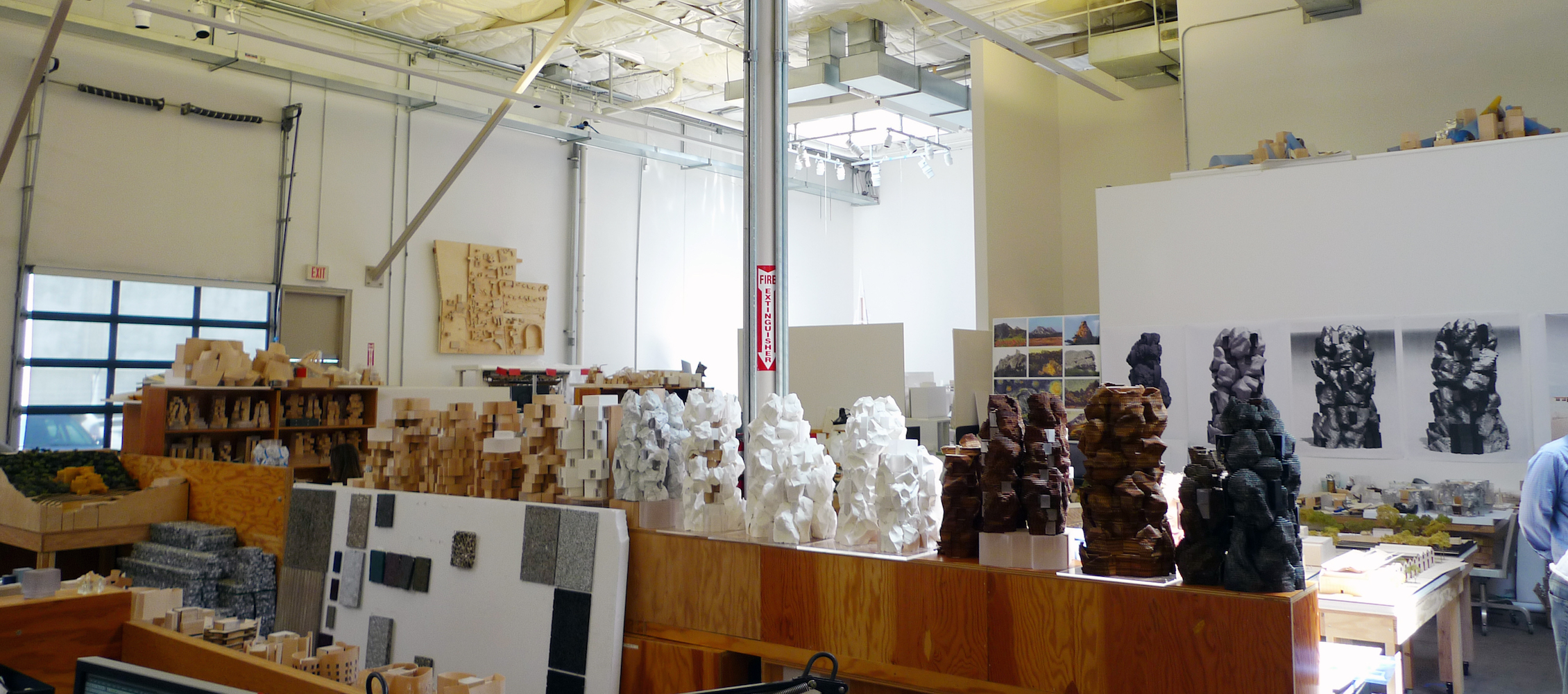
Photo of LUMA Arles construction models, courtesy of Frank Gehry.
WW: You’re also currently designing the Youth Orchestra Los Angeles (YOLA). What is your goal? How are you achieving that?
FG: The goal is always the same on concert halls—to create a room to connect the performers to the audience. When you do this, you create a virtuous loop where the audience feels and hears the performance better, they respond more, and the performers feel the engagement of the audience and they perform better. I think we have created a really great room on a very modest budget to play and to listen to music in.
The height of the room and stage are both the same dimensions as Walt Disney Concert Hall, so my hope is that members of the LA Philharmonic will feel comfortable playing at YOLA Inglewood and that the kids from the YOLA Orchestra will feel comfortable playing at WDCH.
WW: This summer, Gagosian in Beverly Hills is presenting a selection of your sculptures and fish lamps inspired by your granddaughter and Alice in Wonderland. Are there any other unexpected elements seen here?
FG: In addition to the fish, we have created the Mad Hatter’s Tea Party in the upstairs gallery. I hope that it will be a very vibrant show and bring people a lot of joy.
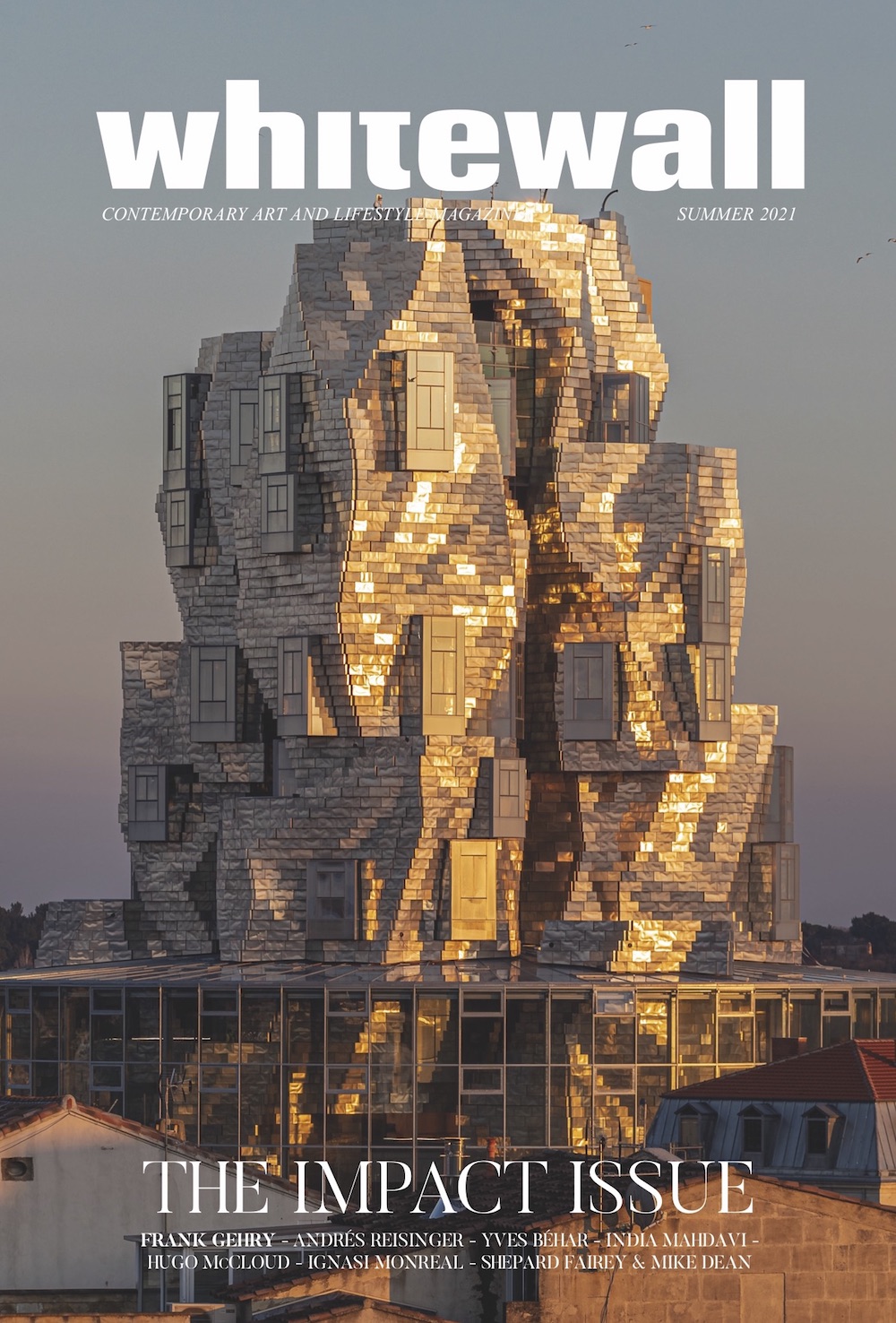
Whitewall’s Summer 2021 Impact Issue cover. Pictured: Tower imagined by Frank Gehry for LUMA Arles, January 2021, LUMA Arles, Parc des Ateliers, Arles, France, © Adrian Deweerdt.



